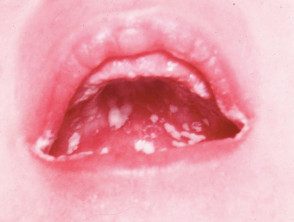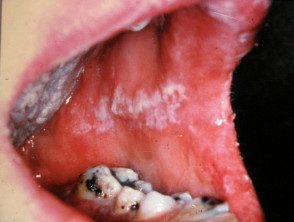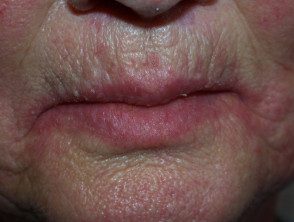What is oral candidiasis?
Oral yeast infection is often referred to as thrush because its white patches resemble the breast of the bird with the same name. Although candida is present in the 50% of the normal flora of healthy mouths, it causes infection (candidiasis) when increased numbers of yeast cells invade the mucous membrane (the name of the moist skin inside the body openings).
What factors predispose to candida infection?
- Childhood or old age
- In a newborn baby, maternal vaginal yeast infection
- Serious underlying conditions, such as Cancer, primary immunodeficiency or infection with the human immunodeficiency virus
- Candida infection elsewhere, for example in a baby, napkin dermatitis
- Dry mouth due to salivary gland disease or medications, eg antihistamines, diuretics.
-
Dentures, especially if they are not cleaned regularly or do not fit well
- Of smoking
- Injury to the mouth.
- Broad spectrum antibiotics
- Nutritional deficiency, for example iron or vitamin B deficiency
- Inhaled corticosteroids used to treat asthma, such as beclomethasone, budesonide, fluticasone.
The normal organism it is Candida albicans, but C. tropicalis Sometimes it is responsible. C. dubliniensis It is also reported in HIV Patients See Non-albicans candida infections.
Oral yeast infection

Oral yeast infection

Oral yeast infection

Angular cheilitis
More images of oral candidiasis.
What are the clinical features of oral candida infection?
Candida can arise suddenly as a acute infection or persist for long periods such as chronic infection.
Classification of oral candida infection
- Acute pseudomembranous candidiasis. There are white spots on the gums, tongue, and inside of the mouth that can peel off leaving a rough area.
- Acute atrophic candidiasis There are smooth bright red patches on the tongue. The mouth is very sore.
- Chronic atrophic candidiasis. This is common in people with dentures. The underlying mucosa is red and swollen.
-
Angular cheilitis. There are painful red divisions on either side of the mouth, most likely if there is a protrusion of the upper lip over the lower lip causing a deep, moist furrow. Angular cheilitis due to candida and / or Staphylococcus aureus occurs frequently in those taking the acne medication isotretinoin; This medicine dries the lips.
- Chronic hyperplastic candidiasis. This is a type of oral leukoplakia (white patch) inside the cheeks or on the tongue with persistence nodules or lumps It usually affects smokers and is preevil one. Red patches (erythroplakia), as well as white patches, can indicate a malignant change.
-
Chronic mucocutaneous Candidiasis presents as a chronic pseudomembranous infection. Skin and nail They are also affected.
- Medium rhomboid glossitis - there are diamond shaped inflammation on the back of the tongue
- Candida can cause a secondary infection from other skin conditions, such as lichen planus or geographic tongue.
Serious infections can spread down the throat (esophageal infection) and cause difficulty swallowing.
How is the diagnosis of oral candidiasis made?
Microscopy and culture of skin swabs and scrapes help in the diagnosis of yeast infections. However, candida can live off a mucous membrane fairly harmless surface. It can also secondarily infect an underlying disorder.
In extensive oral candidiasis, endoscopy it is done to see the extent of lesions in the gastrointestinal tract.
How is oral candidiasis prevented?
Practice good oral hygiene.
- Brush your teeth regularly.
- Use warm saline water as a mouthwash.
- Avoid overuse / overuse of antiseptic mouthwashes as they alter the flora of the mouth.
- If you use a steroid inhaler for asthma, drink water and rinse your mouth after inhalation.
Dental prosthesis users
- Clean dentures with an anticandida preparation, such as sodium hypochlorite 1% solution.
- Remove dentures overnight.
What is the treatment for oral candidiasis?
Mouthwashes with anticandidal activity include:
- Triclosan
- Chlorhexidine gluconate
- Essential oil formulations.
Current Antifungal products for oral candidiasis include:
- Nystatin oral suspension (1 ml 4 times a day) or tablets (for prostheses stomatitis)
- Amphotericin B (5 ml or 1 tablet of 10 mg 4 times a day)
- Miconazole gel (2.5 ml after food 4 times a day).
Treatment should be continued for 1 to 4 weeks or until symptoms have disappeared for 7 days.
-
Fluconazole 100-150 mg daily for 10 days (especially for pseudomembranous infection)
- Itraconazole
- Voriconazole
- Amphotericin B

